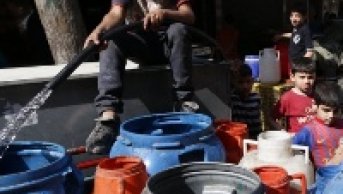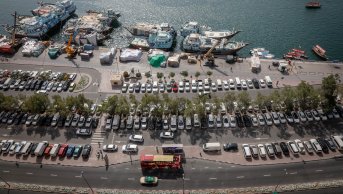Different Conditions and Similar Objections in Transboundary Waters: Observations on the Mekong River
The Mekong river is the tenth longest river in the world and it spans 4,909 kilometers, draining an area of 795,000 km2. The floodplains in the Mekong river basin cover an area of 70,000 km2. The mean discharge volume of the Mekong river is 15,000 m3/s. Comparing it to the Euphrates river, it equals to 1000 m3/s in the mean discharge over many years. 73 million people live in the Mekong river basin. They are envisaged to rise up to 120 million people by 2025. The river runs through six riparian countries which are, respectively, as follows: China, Myanmar, Vietnam, Laos, Cambodia, and Thailand. In 1959 the UN formed the Mekong Committee, which is composed of the Lower Mekong basin countries such as Vietnam, Laos, Cambodia and Thailand.. Following the Mekong Agreement signed in 1995, the committee was succeeded by the Mekong River Commission (MRC) . The upper riparian China and Myanmar do not take part in the aforesaid Commission, but they attend the dialogue meetings held once a year as a dialogue partner. Being the upper riparian, China is not a signatory party to any agreement. However, it has taken part in collaborations regarding data sharing over the last two years. Donor Consultative Group, and Development Partners and Cooperating Institutions are sub-groups within the Mekong River Commission. The Consultative Group, which is a part of the decision-making mechanism in projects, consists of 13 countries and 7 international organisations. Considering the operating structure of the Commission, the aforementioned sub-group is influential in use and planning of water.
Unlike the transboundary waters on our agenda and the geography we live in, the Mekong river is primarily used for navigation and fishery purposes. Agriculture and hydropower generation comes next following the aforesaid fields. The Mekong Agreement signed in 1995 does not include any statement regarding the allocation of water between the countries. The ecosystem of the river is shared between the countries. Besides, dry seasons might be observed in the basin where the main problem related to water resources is flood and pollution. During the field study conducted in the basin, it was detected that 47 stations are located in the Lower Mekong river basin to avoid flooding. The stations provide data every fifteen minutes and there are only 48 stations for quality measurements. 22 of those stations are located in the Mekong's tributaries and only basic pollutants (PH, nitrate, heat, EC, etc.) are measured.
As mentioned above, the fishing industry is of great importance all across the basin. The Mekong river is second only to the Amazon River in terms of fish biodiversity. The Tonle Sap Lake, located within the borders of Cambodia and linked to the Mekong river, hosts 296 fish species ranking third in the world. When it comes to food security in the river basin; fishing is the same for the Mekong river as agriculture is for the countries located in semi-arid and arid climate zones. 60 percent of the food security is provided through fishing. The Mekong Basin yields about 3.5 million tonnes of fish a year. Annual fish consumption per person in the lower basin in 46 kilograms. The World average of fish consumption, on the other hand, is 24 kilograms per person per year.
Navigation is the second most important activity in the river. The Article 9 of the 1995 Mekong Agreement, which is Freedom of Navigation (1), was supported by the Government of Belgium. Navigation is a factor that mutually benefits the member countries of the Mekong Commission and the international trade. In 2009, Cambodia and Vietnam have signed a bilateral treaty that will allow freedom of navigation along the Mekong waterways between the two countries.
Recently, the Mekong river has been on the agenda with the Xayaburi dam to be built on the Mekong mainstream by Laos. Being the first mainstream dam proposed for the Lower Mekong River, Xayaburi dam's construction began with the aim to generate hydroelectric power and irrigation. There are 9 dams on the Mekong mainstream (3 within the borders of China, 4 planned and 1 under construction) in total. There are 12 dams proposed for the Lower Mekong River, and 94 dams under operation Which are constructed for hydropower generation in tributaries of the river.. In regards to the Xayaburi dam, Laos is obliged to negotiate and inform the signatory countries (Vietnam, Cambodia and Thailand) in accordance with the Mekong River Commission. The process began in September 2010. In April 2011, the signatory countries reported that they could not reach an agreement. In addition to this, Cambodia declared it would file a complaint to an international court if Laos moved ahead unilaterally with the Xayaburi dam project. Laos suspended the construction of the dam in May 2012 upon the complaints by Vietnam, Cambodia and environmentalist organisations. Nevertheless, while Laos carries on the construction of the Xayaburi dam despite all complaints, it also carries on the Don Sahong projects on the Cambodia – Laos borderline. Other members of the Commission are worried that other pending project proposals on the Lower Mekong basin could also be implemented following the completion of the aforesaid dams.
Why is the construction of these dams, planned to be built for electricity generation and irrigation purposes, being objected?
- It is believed that those dams will trap sediments carried by the river waters and will negatively affect especially Vietnam which is located in the Mekong Delta and carries out agricultural activities in the area.
- It is worried that fish migration routes will be blocked with the construction of the dams; and from 25 to 100 fish species could become extinct.
- Although it is a "run-of-the-river" dam, it will still create a more than 60km-long in-river reservoir that will have a permanent impact on migratory fish populations and sediment flows.
- It is also put forward that the hydropower to be obtained from the Xayaburi dam and to be transferred to Thailand is not required by Thailand; and that 1260 MW to be obtained from the Xayaburi dam could be provided through other alternative resources.
Based on the meeting held in the Laos National Mekong Committee;
Laos indicates that aside from hydropower generation, the dam will also be used for irrigation purposes; hold flood water during the seasonal floods; and provide water during the dry seasons. Besides, Laos states that the Xayaburi dam will enable fish production during the dry seasons; and the dam will not have any negative effect on the fish species by pointing out to the fact that 90 percent of the fish species in the basin live in the Tonle Sap Lake and the rest (10 percent) is in Laos, Cambodia. Also, Laos puts forward that they take all the objections and criticisms into consideration and inform the members of the Commission on the Xayaburi dam every six months.
In general, as a result of 50 years of field research, the Mekong River basin Commission has been carrying out plans and projects for sustainable development of the river water in cooperation with foreign donor groups and international organisations. The Xayaburi dam has been a particularly controversial issue for years but it is envisaged that the dam will be completed. Within the scope of the integrated management of the water resources across the basin, the programmes carried out are as follows: fisheries, irrigation, navigation, flood management, drought management, hydropower and climate change. Analyzing the studies, it is observed that mathematical modeling of the river basin remains insufficient, as do the monitoring stations in terms of both quality and quantity. As mentioned before, even though China and Myanmar are not members of the Mekong River Commission, they are both dialogue partners with the other states in the basin. China has been contributing to the flood measurements through the two monitoring stations it has created over the last two years. It is considered that China is gradually becoming a bigger part of the process with each passing day. MRC Member countries who have been funded by The Consultative Group for many years tend to carry out projects only with the participation of commission members without aneed for support from external resources.
(1) Agreement on the Cooperation for the Sustainable Development of the Mekong River Basin, 05 Nisan, 1995
http://www.mrcmekong.org/assets/Publications/policies/agreement-Apr95.pdf








